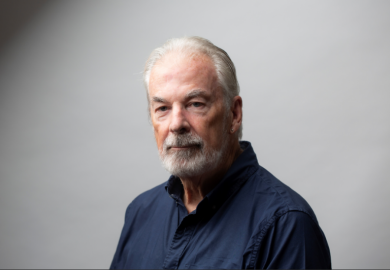See is a new contemporary art-photography magazine produced by The Friends of Photography, a "non-profit organisation", based in San Francisco. It appears not to be for counter-sale but is available as a benefit of membership of The Friends, which costs $60 annually.
See is an expensive production. The paper is heavy and glossy, slightly larger and more square than A4, and appropriately the photographic reproduction is excellent.
The contents suggest that See is conceived of as a vehicle to present a range of contemporary photographic work; it is not primarily a critical forum or a chronicler of the latest scene like most art magazines.
There are seven features on recent photographic work with no critical commentary. There is a two-page spread showing images of kitsch suburban real estate by Henry Wessel. A ten-page illustrated essay by Carrie Mae Weems telling the unwritten history of the deportation of African slaves. Then two further narrative pieces, which might be called image-text novellas, both utilising the suggestive personal-impersonal quality of old family photographs to tell or hint at the story of ordinary people's lives. These are by Julia Parker-Pribuss and Susan Schwartzenberg, the latter's piece specially designed for See. There are also a series of multi-media photo-works from David Ireland's project, Skellig, which is the name of an island retreat of early Irish monks, and a series of photographs of an atmospheric "city woodland" planted by the US Army in San Francisco 100 years ago, from Lyell Gomes's project, Presidio.
The lead feature shows fine examples of the work of Susan Derges, a British artist, who photographs processes in nature with great elegance and a sense of wonder. The commentary accompanying these photographs consists mostly of afterwords derived from conversations with the artists.
Of the 84 pages, only 11 are of criticism, including two book reviews, a long review of a Richard Avedon retrospective by the editor-in-chief, an essay by Maurice Berger already published in the catalogue for the exhibition, "Black Art and Mainstream Culture", at the University of California in 1993, and an intriguing, anecodotal essay by Rebecca Solnit on the history of a portrait by Diane Arbus (itself updated from 1992). The text is padded out by two poems by Sandra McPherson and Quincy Troupe, and a short story by Raymond Carver, each of which is about photography. There is no international review section covering the latest exhibitions and no substantial articles by leading critics as one might have expected. It is the visual not the textual contents which are the real meat of See.
Given the limitations imposed by a house style (here an austere "Neville Brody" look), the advantage of See is that it presents its readers with an unmediated view, a see-ing, of the latest in photographic art. The editorial to this premier issue backs up this notion of unbiased access. See presents "no single ideology", writes the editor-in-chief, but a "spectrum". He also hopes that See will show work that is "enigmatic" and "intriguing".
Finally See's pursuit of "pure visuals" is "enigmatic" not in a way it intends to be but because it may leave the uninitiated reader wanting more in the way of guidance. Does it matter that most of the artists covered are local to California or that The Friends market limited-edition sets of prints by David Ireland, calling them, moreover, "important new work"?
Seeing is a complex business. Clearly, principled criticism gives shape and form to an artistic milieu, and in these post-modern times, the requirement for such criticism is more urgent than ever. Pluralism is itself an ideology and in promoting taste tolerance it ultimately allows market values to win out over aesthetic ones. See should continue its emphasis on visual features but counterbalance them with explicit, informative and strong criticism.
John Cornall is a freelance writer and art critic.
See:: A Journal of Visual Culture
Editor - Andy Grundberg
ISBN - ISSN 1076 4550
Publisher - The Friends of Photography/distributed by MITPress
Price - $60.00
Register to continue
Why register?
- Registration is free and only takes a moment
- Once registered, you can read 3 articles a month
- Sign up for our newsletter
Subscribe
Or subscribe for unlimited access to:
- Unlimited access to news, views, insights & reviews
- Digital editions
- Digital access to THE’s university and college rankings analysis
Already registered or a current subscriber?



